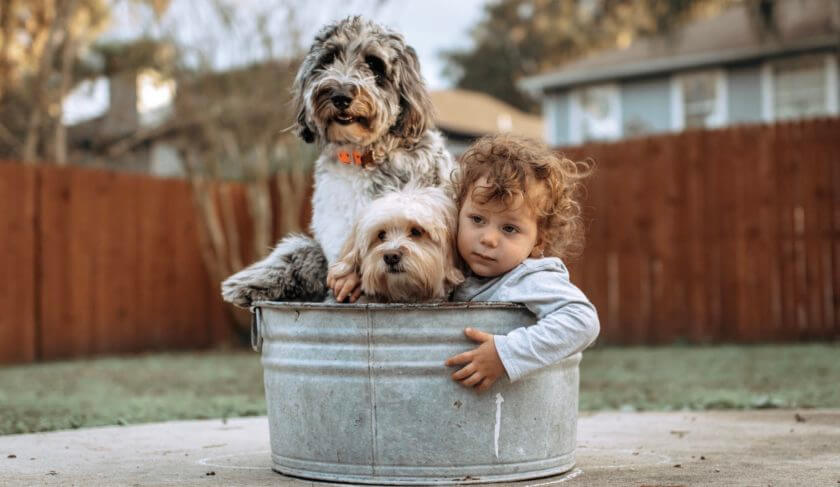
Dog ownership can reduce stress, help with depression and is associated with better results for heart attack survivors. Despite the therapeutic benefits, a dog is not a medical expense you can deduct from your taxes. (Seems unfair, right?)
Before you venture out “just to look,” it’s smart to take a cold, hard look at the costs of owning a dog. No judgment if you get the steps a little out out of order. I did too.
Costs can vary tremendously, and you have the most control before you choose your new companion.
Pets are full of surprise expenses. You could discover your new friend destroys sofas or chews baseboards when they are bored and lonely. Still, there are predictable costs and often ways to save.
Housing issues
Check with your homeowners or renters insurance to be sure your policy includes the breed or mix you want. Some have restrictions on breeds and/or weight, and pet ownership may require a nonrefundable deposit and potentially higher monthly rent, says Kellye Pinkleton, director of public policy for companion animals for the Humane Society of the United States.
Adoption
This can be free if a shelter waives fees, but normally you’ll pay something. If you are looking for a purebred puppy, you may pay thousands. Pinkleton says that choosing a dog from a shelter or rescue can significantly reduce initial costs because most pets are already microchipped and neutered or spayed. A shelter can also make recommendations based on a specific animal’s needs to help you choose a pet that is a good match for your family and activity level, says Kelly DiCicco, manager of promotions, ASPCA (American Society for the Prevention of Cruelty to Animals) adoption center in New York.
Supplies
You’re going to need a collar, leash and bed at a minimum. You might need a jacket, brushes, harness, doggie doors, gates and perhaps a fence. If you’ve had a dog before, you may still have many supplies. Most dogs need toys. That can be as simple as a tennis ball in a sock or it could be a subscription service that sends toys monthly. If floor cleaner is not on your list, maybe add that, along with odor eliminator and pee pads. How you can save: Check out online marketplaces for items you can clean and sanitize. Friends whose dogs have outgrown puppy crates may also be able to help.
Food
Bigger dogs eat more than smaller dogs. Then again, smaller dogs tend to live longer. According to the Canine Journal, you should expect to pay between $120 and $500 per year for dog food. How you can save: Compare prices of vet-recommended foods. Mail-order or store brands may save you money without compromising quality.
Routine veterinary care
Wellness exams can cost $20-$85, according to Canine Journal, and that’s before flea and tick preventatives, fecal exams or vaccinations. Heartworm and flea and tick preventatives are expensive. Expect to pay more than $300 a year for name brands Heartgard and Nexgard. Costs of both go up with the weight of the dog. How you can save: The Humane Society has a list of suggestions and potential resources. What not to do: Skip yearly exams to save money, says the ASPCA’s DiCicco.
Licenses
Check to see if it’s required in your location. It’s generally under $30 per year if your dog is spayed or neutered. How to save: Check for discounts based on owner’s income or age.
Daycare
If you are almost always home, or you have a laid-back dog that can be left alone sor a stretch long enough for work, you may not have to pay a penny. But if you get called back to the office, be prepared. Plan to spend about $25 per day or $15 per half-day; another option is hiring a dog walker, but that may not save money.
Boarding
Accommodations may range from staying in a crate at the vet’s office to a small room with a leather sofa and a TV. Costs can range from free to close to $100 a night. The money-saving option: A friend or relative who wishes they had a dog and would jump at the chance for temporary custody of yours.
Training
Though it’s possible you’ll get a dog with good manners, it’s more likely you’ll need to do some teaching. There are abundant resources online, many of them free. You may find low-cost training at pet stores. Or, you can pay for in-home training or a boot-camp-like training where your dog boards for a week or more and comes back knowing basic commands. Those cost $1,000 or more. While you can train your own dog for free, it requires commitment, consistency and practice. And treats. Be sure those are in your budget, too.
Grooming
Some dogs — looking at you poodles, doodles and huskies — require a lot of grooming. Having a professional do it every 6 weeks or so can be expensive — up to about $90 before the tip. You can save a bit by choosing a breed that requires minimal grooming (hi, beagles and Italian greyhounds). Or, you can buy grooming equipment and learn to do it yourself.
Emergency expenses
Dogs eat things they shouldn’t, get injured playing or fighting or otherwise send you to the emergency clinic, panicked and sweating. The costs can be enormous. Pet insurance can help. I priced the cost of insuring my young, healthy 16-pound hybrid dog, and it was $22.30 per month with Healthy Paws. (Had he been 10 years old, the rate would have been $45.72.) That was with a $250 deductible. If you decide against insurance, it’s a good idea to have a savings account earmarked for emergencies.
Serious or hereditary illness
These can be expensive. Dogs can be treated for diabetes, epilepsy, cancer, glaucoma and more. Again, insurance can help. However, pet insurance does not cover pre-existing conditions, so it’s smart to buy it while your dog is young and healthy.
The benefits of having a furry friend may be incalculable, but the costs along the way needn’t catch you by surprise. And being prepared can help you make decisions with only your dog’s welfare in mind. But in the end, says the ASPCA’s DiCicco, “financial circumstances alone are not reliable indicators of the capacity to love and care for a companion animal.” You’ll need some money for basics, but a capacity for love counts, too.
READ MORE:
- The Unexpected Costs Of A Pet Brought Home During The Pandemic
- The Ultimate Financial Guide To Getting Your First Pet
- Dog Bites Man. Is Your Homeowner’s Policy Going To Protect You?
MORE MONEY TIPS: Get them delivered to your virtual front door each week. Subscribe to the free HerMoney newsletter today!







